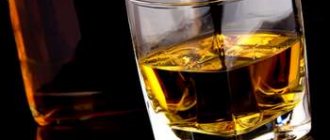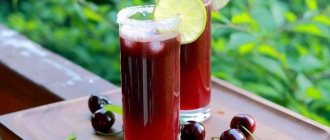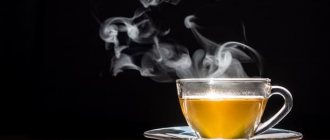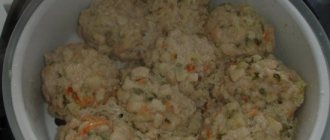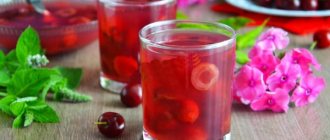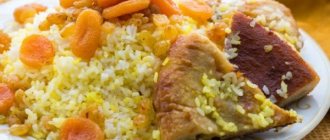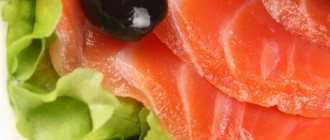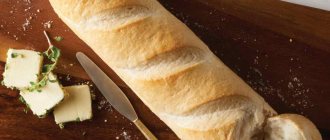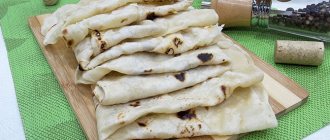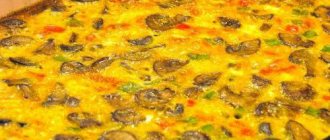Is it possible to gain weight from champagne?
Champagne is a drink that appears in every home when an important event is celebrated.
If you consume champagne in small quantities, it will not cause any harm to the human body. How many calories are in champagne, can the drink cause serious harm. Let's try to figure it out.
Calorie content of champagne wines
Humanity has been drinking champagne for many years. The attitude towards sparkling wine is always not very serious. Champagne wine is a low-alcohol drink and theoretically cannot cause much harm to health. However, what is the effect of this wonderful wine on the human body has not yet been fully studied.
Champagne has many varieties. Each type differs in its calorie content:
- Dry – 75 kcal;
- Semi-dry – 82 kcal;
- Semi-sweet – 88 kcal;
- Sweets – 90 kcal.
Each value was taken per 100 ml. In other words, its calorie content depends on the amount of sugar in champagne. The very popular Chardonnay champagne contains 90 kcal.
Brut champagne is considered a low-calorie champagne. The wine contains only 55 kcal.
How it affects the body
Some people believe that drinking champagne can be compared to drinking soda. A glass of Brut wine simply quenches your thirst and cannot be considered alcohol. This opinion is far from the truth. The main catch was hidden in a glass of carbonated drink. The fact is that carbon dioxide, which is part of a bottle of champagne, increases the rate at which alcohol enters the bloodstream.
When combined with glucose, alcohol is absorbed faster and a person gets drunk very quickly.
The most dangerous thing is drinking champagne on an empty stomach. In this case, severe irritation of the digestive tract occurs and acidity increases. In addition, drinking champagne has a negative effect on liver function. It has long been noted that those who constantly drink alcoholic beverages suffer from cirrhosis.
Nutritionists say that drinking two glasses of champagne is enough to keep you from gaining weight. This dose will not cause poisoning of the body.
Champagne diets
More recently, an alternative to standard methods of combating excess weight has been advertised on the Internet and in the media. The advertisement said that if you drink two glasses of champagne a day, you can lose weight.
According to the author of the Champagne Diet, drinking wine is one of the great ways to help you lose weight. In principle, such a diet is difficult to classify as know-how. After all, most people who are losing weight are constantly trying to resolve the dilemma, whether to drink on holiday or maintain a slim figure.
There are several varieties of the Champagne diet, different from each other.
- Breakfast is as usual. For dinner you need to drink a glass of champagne, preferably dry. It contains only 125 kcal. After four days, weight loss will be noticeable.
- For such a diet you will need: a bottle of champagne; strawberries – 800 gr; chocolate – 120 gr. You need to eat 200 grams of strawberries and 3 squares of chocolate three times a day. For such a diet, only dark chocolate is needed; milk chocolate is not suitable. During dinner, the remaining strawberries and chocolate are eaten, all washed down with a glass of champagne.
- Strawberries are replaced by fresh pineapple. Eating is carried out similarly to the second diet.
- Fruits are exchanged for chocolate and nuts. Eat 13 nuts four times a day along with dark chocolate. For the fourth time, everything is washed down with a glass of champagne.
Cons of wine diets
The Champagne diet has many positive qualities, but it’s difficult to talk about its usefulness. It does not contain foods that contain a lot of calcium. A person must receive 1200 mg of this substance per day, especially if he often drinks alcohol.
During Champagne, you must take medications with a high calcium content. This will prevent bone fragility and prevent osteoporosis from appearing in a few years.
Of course, the Champagne diet is not available to everyone, because it requires large financial investments. A wine diet helps you get through all the holidays without causing damage to your liver. We can draw an unambiguous conclusion: champagne cannot cause a large increase in body weight, but such a diet will help you lose weight.
Calorie content of champagne wines
The attitude towards sparkling wine is always not very serious. Sparkling wine is a low-alcohol drink and theoretically cannot cause much harm to health. However, what is the effect of this wonderful wine on the human body has not yet been fully studied.
Champagne has many varieties. Each type differs in its calorie content:
- Dry – 75 kcal;
- Semi-dry – 82 kcal;
- Semi-sweet – 88 kcal;
- Sweets – 90 kcal.
Each value was taken per 100 ml. In other words, its calorie content depends on the amount of sugar. The very popular Chardonnay variety contains 90 kcal.
Brut is considered low-calorie. The wine contains only 55 kcal.
Champagne
Champagne is a sparkling wine produced in the French province of Champagne. All other drinks containing carbon dioxide can only be called sparkling. Champagne is produced by secondary fermentation in bottles.
Like everything ingenious, champagne was born by accident. In the 17th century, French winemakers suddenly received a “devilish” wine - a sparkling wine that burst the barrels in which it was aged (calorizator). Only after the creation of the technology of secondary fermentation - when it occurs directly in bottles - was the wine able to be tamed and magnificent champagne appeared.
Champagne is usually made from one grape variety (single varietal) or only three grape varieties are used: chardonnay, pinot noir and pinot meunier. The method by which champagne is prepared is called "champenoise", in which the first fermentation occurs in steel containers, then the wine is bottled, which lie in the cellars for six months. The wine bottles are then turned daily to collect sediment around the neck. Only a few winemakers master the process of disgorging (removing sediment from a bottle). After the champagne has become clear, it can be consumed, but such wine can also be stored for a long, almost unlimited, time, only improving the quality of taste.
To produce this drink, unripe grapes are collected. However, it contains more acid. The collected grapes are thoroughly pressed, and the resulting grape juice is poured into steel cubes or wooden barrels for further fermentation. In order for the excess acid to disappear, it is blended with other sparkling wines from other vineyards that have not been aged for the same number of years. Thus, the resulting drink is immediately bottled, where a certain amount of yeast and sugar is added.
How it affects the body
Some people believe that drinking champagne can be compared to drinking soda. A glass of Brut wine simply quenches your thirst and cannot be considered alcohol. This opinion is far from the truth. The main catch was hidden in a glass of carbonated drink. The fact is that carbon dioxide, which is part of a bottle of champagne, increases the rate at which alcohol enters the bloodstream.
When combined with glucose, alcohol is absorbed faster, and a person gets drunk very quickly.
The most dangerous thing is drinking sparkling wine on an empty stomach. In this case, severe irritation of the digestive tract occurs and acidity increases. In addition, drinking champagne has a negative effect on liver function. It has long been noted that those who constantly drink alcoholic beverages suffer from cirrhosis of the liver.
Constant consumption of champagne has a negative effect on human memory and vision. The effect of alcohol causes irreversible negative processes in the body. Brut, like other wines, creates conditions for the rotting of metabolic products in the intestines. As a result, the body's condition quickly deteriorates.
Nutritionists say that in order not to gain weight, drinking two glasses is enough. This dose will not cause poisoning of the body.
How many calories are in brut champagne 100 grams
Nutritional value and chemical composition of “brut champagne”.
| Nutrient | Quantity | Norm** | % of the norm in 100 g | % of the norm in 100 kcal | 100% normal |
| Calorie content | 55 kcal | 1684 kcal | 3.3% | 6% | 3062 g |
| Squirrels | 0.1 g | 76 g | 0.1% | 0.2% | 76000 g |
| Carbohydrates | 0.2 g | 219 g | 0.1% | 0.2% | 109500 g |
| Alimentary fiber | 1.6 g | 20 g | 8% | 14.5% | 1250 g |
| Water | 88.2 g | 2273 g | 3.9% | 7.1% | 2577 g |
| Vitamins | |||||
| Vitamin B2, riboflavin | 0.01 mg | 1.8 mg | 0.6% | 1.1% | 18000 g |
| Vitamin RR, NE | 0.1 mg | 20 mg | 0.5% | 0.9% | 20000 g |
| Macronutrients | |||||
| Potassium, K | 60 mg | 2500 mg | 2.4% | 4.4% | 4167 g |
| Calcium, Ca | 18 mg | 1000 mg | 1.8% | 3.3% | 5556 g |
| Magnesium, Mg | 10 mg | 400 mg | 2.5% | 4.5% | 4000 g |
| Sodium, Na | 10 mg | 1300 mg | 0.8% | 1.5% | 13000 g |
| Phosphorus, Ph | 10 mg | 800 mg | 1.3% | 2.4% | 8000 g |
| Microelements | |||||
| Iron, Fe | 0.5 mg | 18 mg | 2.8% | 5.1% | 3600 g |
| Monounsaturated fatty acids | 0.6 g | min 16.8 g | 3.6% | 6.5% |
The energy value of Brut champagne is 55 kcal.
Primary Source: Created in the application by the user. Read more.
** This table shows the average levels of vitamins and minerals for an adult. If you want to know the norms taking into account your gender, age and other factors, then use the “My Healthy Diet” application.
Champagne is a drink that appears in every home when an important event is celebrated. If consumed in small quantities, it will not cause any harm to the human body. How many calories are in it, can the drink cause serious harm. Let's try to figure it out.
Calorie content of champagne wines
The attitude towards sparkling wine is always not very serious. Sparkling wine is a low-alcohol drink and theoretically cannot cause much harm to health. However, what is the effect of this wonderful wine on the human body has not yet been fully studied.
Champagne has many varieties. Each type differs in its calorie content:
- Dry – 75 kcal;
- Semi-dry – 82 kcal;
- Semi-sweet – 88 kcal;
- Sweets – 90 kcal.
Each value was taken per 100 ml. In other words, its calorie content depends on the amount of sugar. The very popular Chardonnay variety contains 90 kcal.
Brut is considered low-calorie. The wine contains only 55 kcal.
How it affects the body
Some people believe that drinking champagne can be compared to drinking soda. A glass of Brut wine simply quenches your thirst and cannot be considered alcohol. This opinion is far from the truth. The main catch was hidden in a glass of carbonated drink. The fact is that carbon dioxide, which is part of a bottle of champagne, increases the rate at which alcohol enters the bloodstream.
When combined with glucose, alcohol is absorbed faster, and a person gets drunk very quickly.
The most dangerous thing is drinking sparkling wine on an empty stomach. In this case, severe irritation of the digestive tract occurs and acidity increases. In addition, drinking champagne has a negative effect on liver function. It has long been noted that those who constantly drink alcoholic beverages suffer from cirrhosis of the liver.
Constant consumption of champagne has a negative effect on human memory and vision. The effect of alcohol causes irreversible negative processes in the body. Brut, like other wines, creates conditions for the rotting of metabolic products in the intestines. As a result, the body's condition quickly deteriorates.
Nutritionists say that in order not to gain weight, drinking two glasses is enough. This dose will not cause poisoning of the body.
Champagne diets
More recently, an alternative to standard methods of combating excess weight has been advertised on the Internet and in the media. The advertisement said that if you drink two glasses of champagne a day, you can lose weight.
According to the author of the Champagne Diet, drinking wine is one of the great ways to help you lose weight. In principle, such a diet is difficult to classify as know-how. After all, most people who are losing weight are constantly trying to resolve the dilemma, whether to drink on holiday or maintain a slim figure.
There are several types of diets that are different from each other.
- Breakfast is as usual. For dinner you need to drink a glass of champagne, preferably dry. It contains only 125 kcal. After four days, weight loss will be noticeable.
- For such a diet you will need: a bottle of champagne; strawberries – 800 gr; chocolate – 120 gr. You need to eat 200 grams of strawberries and 3 squares of chocolate three times a day. For such a diet, only dark chocolate is needed; milk chocolate is not suitable. During dinner, the remaining strawberries and chocolate are eaten, all washed down with champagne.
- Strawberries are replaced by fresh pineapple. Eating is carried out similarly to the second diet.
- Fruits are exchanged for chocolate and nuts. Eat 13 nuts four times a day along with dark chocolate. For the fourth time, everything is washed down with champagne.
Cons of wine diets
The Champagne diet has many positive qualities, but it’s difficult to talk about its usefulness. It does not contain foods that contain a lot of calcium. A person must receive 1200 mg of this substance per day, especially if he often drinks alcohol.
During the diet, it is imperative to take medications with a high calcium content - this will prevent bone fragility and prevent osteoporosis from appearing in a few years.
Of course, the Champagne diet is not available to everyone, because it requires large financial investments. A wine diet helps you get through all the holidays without causing damage to your liver. We can draw an unambiguous conclusion: champagne cannot cause a large increase in body weight, but such a diet will help you lose weight.
The calorie content of a drink is an important component, especially for those people who are accustomed to monitoring their own health and their appearance. Each modern alcoholic drink has unique nutritional values, and in this article you will find out how many calories are in different types of champagne.
You will be presented with a calorie table, as well as useful information regarding the value of the alcohol we are considering in popular cocktails.
How does the calorie content of champagne vary and what does it depend on?
While enjoying exquisite sparkling products, be sure to take into account the fact that in addition to pleasant relaxation, they can cause harm to your body. Weight gain in this case is one of the most striking examples of what stable consumption of alcohol in large quantities can lead to.
And in this case, no alcohol is an exception. Like beer, vodka, rum or wine, champagne can seriously affect the health of its admirer.
Often the calorie content of sparkling wine is within 88 kcal per 100 ml of drink, but often this figure can be both lower and higher. And then we will consider what specific factors can influence such a significant indicator for the consumer.
Sugar concentration
The fermentation process of alcoholic beverages is based on sugar. That is, if you are interested in the question of how many calories can be in semi-sweet or dry champagne, you should initially pay attention to the sugar content.
The larger it is, the higher the nutritional value of the product. Accordingly, the calorie content of semi-sweet champagne is relatively low when compared with the characteristics of representatives of the sweet segment, but at the same time it cannot be called ideal.
Alcohol concentrations
The second thing you should pay attention to is the degree measure. When looking at the label on how many calories are in the sweet or dry champagne you purchased, you must understand the fact that the degree is directly related to the nutritional value. The higher it is, the fattier the product. Give preference to lighter alcoholic blends if you do not want to have a negative impact on your weight.
Cooking process
Often wondering how many calories are in one glass of champagne and taking, for example, a dry and semi-sweet product for comparison, you will notice that the first drink has an order of magnitude higher nutritional value, although it contains less sugar.
This is due to the special principles for preparing alcohol that a particular manufacturer may use. Not always drinks can be adjusted to generally accepted criteria. Quite often there are original products created using special technologies.
Adding Various Ingredients
When reading the label in detail, be sure to pay attention to the additional ingredients that manufacturers use in the process of creating their drinks.
Often, the calorie content of brut champagne, as well as various semi-sweet, semi-dry and sweet versions of sparkling wine, can take on a “floating” character due to the fact that in addition to certain grape varieties, the product contains juice, spices, herbs and other additives. Typically, the more additives the craftsmen use, the higher the nutritional value of the drink.
Previously, we have noted more than once that each variety has its own specific nutritional indicators. And if you really want to fully understand the calorie content of aromatic sparkling assemblies in the future, you will definitely need to not only familiarize yourself with, but also remember the data in the table below.
| View | Calorie content of champagne per 100 grams |
| Dry | 85 |
| Semi-dry | 78 |
| Sweet | 90 |
| Semi-sweet | 88 |
| Chardonnay | 90 |
| Brut | 55 |
Calorie content of sparkling wine in cocktails and mixtures
When fully studying the question of how many calories are in a bottle of semi-sweet, sweet or dry champagne, be sure to pay attention to the fact that sparkling wines excel in cocktails, which may change their nutritional value in one direction or another.
Below we present to your attention a table through which you can familiarize yourself with the most popular list of champagne mixes and study their fundamental nutritional characteristics.
| Name | Number of calories per 100 ml of product |
| Blueberry Lemon Breeze | 205 |
| Mimosa light | 120 |
| Grapefruit-basil cocktail | 161 |
| Tintoretto | 38 |
| Cocktail Champagne | 206 |
| Kir royal | 162 |
Popular types of champagne and their nutritional value
Studying the multifaceted market of sparkling drinks, today you will get acquainted with an impressive list of alcoholic drinks that can give the most vivid tasting experience. The most striking and recognizable representatives of the segment include:
| Name | Number of calories (kcal) |
| Abrau-Durso Semi-sweet | Calorie content of Abrau Durso champagne 88 kcal |
| Bolle Semi-Sweet | 88 |
| Bollinger La Grande Annee Rose Brut AOC | 85 |
| Mumm Cordon Rouge AOC | 85 |
| Ruinart Rose. | 85 |
| Lavetti Crema di Vanilla | 90 |
| Legacy of the Master Lev Golitsyn Brut | 55 |
| Moet & Chandon Brut Imperial | 55 |
| Mondoro Asti | 90 |
| Oreanda White Semisweet | 88 |
| Rachelle Semi-Sweet | 88 |
| Santo Stefano Rose Amabile | 88 |
Did you know? There are more than 49 million carbon dioxide bubbles in a standard bottle of champagne.
Choose suitable assemblages for yourself
Having fully studied the characteristics of sparkling drinks, you will be able to select the most attractive variants of alcohol for your tastings, without worrying that excess calories will harm your health or lead to the formation of fatty deposits.
Properties of semi-sweet champagne
Nutritional value and composition | Vitamins | Minerals
How much does semi-sweet champagne cost (average price for 1 liter)?
Moscow and Moscow region.
210 rub.
Raising glasses of champagne and making wishes at the first chime of the New Year is a relatively recent tradition in Russia. But when it appeared, it’s quite difficult to say. According to some sources, in the early 60s of the 20th century, the USSR government decided to provide each family with at least one bottle of Soviet champagne on New Year's Eve. Probably, ever since then, we have been making a cherished wish after taking a sip of a fizzy drink.
A little more history: champagne came to Russia under Peter the Great. Then this drink of the French kings had a reputation as the most prestigious and expensive wine. Among the Russian nobility of the 18th and 19th centuries, the elite French champagne brands Veuve Clicquot, Louis Roederer and Moet & Chandon were especially valued. All these brands owe their heyday to Russia - by the end of the 19th century, this country became the world's largest consumer of champagne.
Today, the consumption of champagne and other sparkling wines in our country is still of a global nature. Among the most popular varieties of this delicious drink, the leading position belongs to semi-sweet champagne, and there is nothing strange about this. High-quality semi-sweet champagne has a pleasant taste, attractive pale straw color and an unforgettable aftertaste.
Of all the types of this grape drink, this product is characterized by the highest nutritional value - the calorie content of semi-sweet champagne is about 88 cal per hundred grams. This is due to the increased content of sugars that are present in the raw materials. However, this calorie content of semi-sweet champagne is considered low compared to, for example, the same liqueurs or dessert wines, so you can consume it in fairly large quantities without fear of consequences for your figure.
Semi-sweet champagne is not only a light drink with excellent taste, which is usually consumed as an independent product or in combination with fruits or cheeses. It is also used to prepare a variety of cocktails, adding a touch of playfulness and a pleasant aftertaste. In addition, many housewives make delicious desserts, multi-layer jellies, sorbets and other delicious delicacies based on semi-sweet champagne.
Types and calorie content of champagne of different varieties and manufacturers
The calorie content of sparkling wine depends on its variety. The types of drink and their energy value are as follows:
| Variety | Sugar content per 1l | Average calorie content per 100 ml | Additional Information |
| Brut nature or non-dosage. | Up to 6 This is 0.6% | 40–50 | These are expensive wines; the highest quality raw materials are used for their production. No added sugar, therefore it contains only residual sugars resulting from fermentation. |
| Brut or brut | Less than 15 g/l. This is 1.5% | 50–70 | This type of wine goes well with all dishes, so it is the most common. |
| Dry or sec | 17–35 g/l. This is from 1.7 to 3.5% | 70–80 | These are semi-dry or semi-sweet wines. |
| Rich or Demi-sec | From 33 to 50 g/l. This is 3.3–5.0%. | 80–90 | These are dry types of sparkling wine. |
| Doux | From 50 g/l. This is 5.0%. | 90–100 | These are sweet or dessert wines. |
Champagne is produced both from one grape variety - single-varietal - and from several - pinot meunier, pinot noir, chardonnay. All manufacturers create their own unique product with its own aroma and taste, adhering to certain technologies. Everyone can find their favorite sparkling wine. Below are the most popular brands and their calorie content per 100 ml.
- for Veuve Clicquot this figure is 55;
- Abrau Durso has 65 kcal per 100 milliliters;
- Bosca - 70-75;
- calorie content of Dolce Vita - 75;
- Mondoro, like Dolce Vita, contains 75 kcal;
- Russian champagne - 88;
- Tsimlyanskoye, like Russian, has 88 kcal;
- Soviet champagne has an average of 75 kcal;
- Asti Martini - 80.
How to find out the calorie content of a bottle of champagne
Many people are interested in the question, how many kilocalories are in a bottle of champagne and how to count them? Everything is simple here. You need to take the kcal value of the sparkling drink and multiply it by the volume of the bottle.
For example, if you bought a bottle of Soviet champagne and want to know how many calories are contained in this volume, you need 7.5 * 75.
7.5 is the volume of the bottle (750 ml) divided by 100. (We divide by 100 because we know how many calories there are in 100 milliliters).
75 is the number of calories of this particular type of champagne.
And as a result, the resulting calorie content is 562.5 per bottle of sparkling Soviet wine.
If you do not need the calorie content of the entire volume of the bottle, then you can calculate any container in the same way. Two types of glasses are used to serve champagne. They are very different from each other and hold different amounts of liquid. A tall, thin glass with a long stem is called a flute. It holds up to 180 ml. The second option for a glass is a cremanka. The bowl has a wide top and can hold from 120 to 270 ml.
Considering what glass you drink from and how completely you fill it, you can calculate the calorie content of the wine you drink. Multiply 1.8 or 2.7, depending on the type of glass, by the calorie content of champagne and you will find out how many calories you consumed when drinking a glass of sparkling wine. If you poured the drink several times, then sum up the indicators obtained from each glass.
How many calories are in different types of champagne?
The calorie content of a drink is an important component, especially for those people who are accustomed to monitoring their own health and their appearance. Each modern alcoholic drink has unique nutritional values, and in this article you will find out how many calories are in different types of champagne.
You will be presented with a calorie table, as well as useful information regarding the value of the alcohol we are considering in popular cocktails.
How does the calorie content of champagne vary and what does it depend on?
While enjoying exquisite sparkling products, be sure to take into account the fact that in addition to pleasant relaxation, they can cause harm to your body. Weight gain in this case is one of the most striking examples of what stable consumption of alcohol in large quantities can lead to.
And in this case, no alcohol is an exception. Like beer, vodka, rum or wine, champagne can seriously affect the health of its admirer.
Often the calorie content of sparkling wine is within 88 kcal per 100 ml of drink, but often this figure can be both lower and higher. And then we will consider what specific factors can influence such a significant indicator for the consumer.
Sugar concentration
The fermentation process of alcoholic beverages is based on sugar. That is, if you are interested in the question of how many calories can be in semi-sweet or dry champagne, you should initially pay attention to the sugar content.
The larger it is, the higher the nutritional value of the product. Accordingly, the calorie content of semi-sweet champagne is relatively low when compared with the characteristics of representatives of the sweet segment, but at the same time it cannot be called ideal.
Alcohol concentrations
The second thing you should pay attention to is the degree measure. When looking at the label on how many calories are in the sweet or dry champagne you purchased, you must understand the fact that the degree is directly related to the nutritional value. The higher it is, the fattier the product. Give preference to lighter alcoholic blends if you do not want to have a negative impact on your weight.
Cooking process
Often wondering how many calories are in one glass of champagne and taking, for example, a dry and semi-sweet product for comparison, you will notice that the first drink has an order of magnitude higher nutritional value, although it contains less sugar.
This is due to the special principles for preparing alcohol that a particular manufacturer may use. Not always drinks can be adjusted to generally accepted criteria. Quite often there are original products created using special technologies.
Adding Various Ingredients
When reading the label in detail, be sure to pay attention to the additional ingredients that manufacturers use in the process of creating their drinks.
Often, the calorie content of brut champagne, as well as various semi-sweet, semi-dry and sweet versions of sparkling wine, can take on a “floating” character due to the fact that in addition to certain grape varieties, the product contains juice, spices, herbs and other additives. Typically, the more additives the craftsmen use, the higher the nutritional value of the drink.
How many calories are in champagne?
This drink meets all the requirements of picky ladies: it has a pleasant taste, is not too strong, and in a small dose is also good for health. Only one question may bother ladies, especially those who are on a diet: how many calories are in a lady's drink? From which the following smoothly follows: won’t it destroy the complex relationship with one’s own body weight?
This drink meets all the requirements of picky ladies
First - about the benefits
Champagne is extremely popular among girls and women for many reasons, including not only its exquisite taste and the aura of solemnity formed because it is drunk only on special occasions. The advantages of this drink are that it has an effect on the body similar to that of high-quality red wine, that is:
- strengthens the cardiovascular system;
- helps normalize blood pressure;
- improves blood supply to internal organs.
The drink owes all these properties to the content of a large amount of beneficial antioxidant substances.
Important: all positive qualities appear only with normalized consumption - no more than two glasses per day. If this norm is exceeded, lovers of this drink may develop alcoholism or, as a lesser evil, overweight
Different varieties - different “weight”
Each type of sparkling sweet drink has a certain amount of calories. So, a dry drink (100 ml) contains 85 Kcal, the calorie content of a semi-dry drink is 78 Kcal, sweet and Chardonnay will give the body 90 Kcal, and semi-sweet – 88 Kcal. The most “dietary” is Brut - it contains only 55 Kcal.
To find out how many calories are in one bottle of a woman’s favorite drink, you need to carry out simple calculations: multiply the volume of the container by the number of calories in the selected variety. So a bottle (750 ml) of Brut champagne (55 Kcal) contains approximately 412 Kcal.
The most “dietary” is Brut - it contains only 55 Kcal
However, what matters is not only how much drink and what type was drunk, but also what kind of snack was served with it. So, even a minimally “weighty” Brut will not be healthy if you eat it with sandwiches, cakes, pastries and marshmallows, and chocolate products. To maintain your diet, it is recommended to serve salads, cheese, fruits, berries, almonds, and seafood with champagne.
Not a weight loss product
Many representatives of the better half of humanity believe that a diet in which champagne is the main food product can be an excellent tool in the war against unjustly acquired kilograms.
On the one hand, this drink (even the Brut variety) contains enough calories to saturate the body with a daily dose of beneficial microelements, but not “overload” it.
From this point of view, the ladies' drink is useful, since even one glass can suppress appetite for a certain time.
With the exception of relatively light beer and natural red wine, champagne is the most low-calorie product, and this is also the reason that women and girls, the main connoisseurs of diets, prefer to drink it. This drink will prevent you from gaining excess weight while the ladies enjoy a pleasant evening
It is only important to remember how much you can drink so that the pleasure does not turn out to be destructive
- Have you tried many methods, but nothing helps?
- Another coding turned out to be ineffective?
- Is alcoholism destroying your family?
Do not despair, an effective remedy for alcoholism has been found. Our readers have tried the clinically proven effect on themselves... Read more>>
Elite alcohol
Most of the fair sex, in an effort to have a beautiful and slim figure, carefully monitor the number of calories in various foods and drinks. The lower the calorie content of a product, the more interest it attracts from a woman who wants to look slim and irresistible. Alcoholic drinks also fall into this category, especially since some of them can hardly be called neutral in terms of huge calorie content.
Although champagne is one of the favorite drinks of beautiful ladies, some of them ask the logical question whether this drink can be consumed regularly without fear of consuming a large number of calories. Is it safe to drink sweet or semi-sweet champagne on a regular basis? How many calories do sweet and semi-sweet varieties of this drink contain?
The history of champagne goes back hundreds of years and this drink is still considered elite and presentable, and its appearance on the table is evidence of an atmosphere of solemnity. The birthplace of this sparkling drink is considered to be France, namely one of its provinces called Champagne. Therefore, in a more precise sense of the word, only the original French drink made here can be called champagne. The remaining varieties would be correctly called light sparkling wine. But the name “champagne” has become so firmly entrenched in our lexicon that today no one picks on the details of pronunciation.
In addition to its pleasant taste and aroma, champagne has a number of useful and even medicinal properties. With it you can:
- Restore and balance blood pressure;
- Strengthen the functioning of the cardiovascular system;
- Improve and establish blood supply to internal organs.
As for the calorie content of a sparkling drink, each variety will differ in this regard from the others. So semi-sweet champagne will contain up to 80 calories per 100 ml. And sweet and dessert varieties contain up to 100 calories in the same number of milliliters. It is logical to conclude that dry and semi-dry champagnes will contain almost half as many calories.
To calculate how many calories are contained in a whole bottle of sweet or semi-sweet champagne, it is worth making simple calculations that allow you to correctly and accurately navigate the calorie content of the drink. It is known that a standard bottle of champagne has a volume of 750 ml. Therefore, the number of calories can be calculated as follows. In semi-sweet champagne, where the average number of calories per 100 ml is 55 units, you need to multiply 750 (ml) by 55 (Kcal) and divide by 100 ml. As a result, we get the final result - 412.5 Kcal. In sweet varieties of champagne, a similar calculation is made, allowing you to get the exact number of calories contained in one bottle.
When counting the calories that are in champagne, it is also worth considering that many people consume it with snacks that are considered high in calories. For example, the calorie content of semi-sweet champagne will increase several times if consumed with marshmallows, chocolate, pastries or cakes. The ideal way to enjoy champagne without worrying about consuming a lot of calories is to drink it with:
- Fruits;
- Berries;
- Almonds;
- Light salads;
- Seafood;
- Low-fat varieties of cheese.
Given that the desire to have a slim figure prompts many women to follow a strict diet, there is also concern about the compatibility of diet and champagne. Some types of diets involve drinking champagne regularly instead of eating certain foods. And although many women are confident in the effectiveness of this approach, researchers and nutritionists say that champagne stops the feeling of hunger only for a while, after which the desire to eat quickly returns.
It must be remembered that while following any diet, a woman deprives herself of certain vitamins, substances and components necessary for the body, and champagne, being an alcoholic drink, can at the same time have a strong effect on it. Therefore, those who suffer from problems with the gastrointestinal tract should not drink champagne at all while on a diet. Otherwise, a woman risks causing severe irritation of the gastrointestinal mucosa, causing even greater harm to her body. Not only for those who have the health difficulties described above, but also for all other women, doctors strongly recommend not to drink champagne on an empty stomach.
Women's favorite drink, champagne, in comparison with other types of alcohol, is the lowest in calories, therefore, to the delight of most beautiful ladies, it can be consumed often without fear of ruining your figure.
How many kcal
Calorie content in sparkling wines directly depends on the level of sugar and alcohol content. If we talk about common types, here’s how many calories they contain:
- brut – 55 kcal per 100 ml;
- dry – 85 kcal per 100 ml;
- semi-dry – 78 kcal per 100 ml;
- semi-sweet – 88 kcal per 100 ml;
- sweet – 90 kcal per 100 ml.
And yet, each specific type of wine has its own calorie content.
Asti white semi-sweet
White semi-sweet wine Asti comes from Piedmont, Italy. For production, only the White Muscat grape variety is used. The wine has a sweet taste of muscat grapes, shaded with peach and honey. Calorie content of the drink:
- in 100 ml – 78 kcal;
- in 200 ml – 156 kcal;
- 750 ml (standard bottle) – 585 kcal.
Lambrusco bianco
Another representative of Italian wines, Lambrusco, is made from the grape variety of the same name. This species is recommended to be consumed by young people, aged no more than 2 years. The semi-sweet drink has a fresh, fruity taste. The aroma of the wine intertwines shades of strawberries and raspberries. Lambrusco bianco calories:
- in 100 ml – 62 kcal;
- in 200 ml (glass) – 124 kcal;
- 750 ml (standard bottle) – 465 kcal.
Soviet semi-sweet champagne
This champagne was first released in 1937 in Rostov-on-Don. For the production of semi-sweet Soviet, elite grape varieties are used: Aligote, Chardonnay, White Muscat, Sauvignon, White Pinot, etc.
Calorie content of wine:
- 100 ml – 90 kcal;
- in 200 ml (glass) – 180 kcal;
- 750 ml (standard bottle) – 675 kcal.
New World, Extra Brut
The House of Sparkling Wines “New World” is located in Sudak, Crimea (Russian Federation). The house was founded in 1878 by Prince Golitsyn. Today the company produces 17 brands.
Extra Brut is an exquisite wine for gourmets. The drink is produced on the basis of 3 grape varieties - Pinot Noir, Chardonnay and Riesling. The wine is aged in bottles for 3 years. Extra Brut has a refreshing sour taste, and the aftertaste reveals notes of almonds and figs.
Calories:
- 100 ml – 70 kcal;
- in 200 ml (glass) – 140 kcal;
- 750 ml (standard bottle) – 525 kcal.
Cricova, Muscat
Sweet wine originally from Moldova is produced at the most famous winery in the country. The drink is made from European grape varieties Muscat and Chardonnay using classic French technology.
The production process involves aging the wine in bottles for 3 years. Cricova Muscat is characterized by a rich fruity taste with hints of honey. Calorie content of the drink:
- 100 ml – 100 kcal;
- in 200 ml (glass) – 200 kcal;
- 750 ml (standard bottle) – 750 kcal.
Where are sparkling wines produced?
Wines that are not produced in Champagne not only do not have the right to be called champagne, but even the method of their production is called “classical” and not “champagne method”. Although in fact the composition of the original champagne is no different from sparkling wines made in other regions and countries of the world.
In many countries, the production of such drinks has long been established. In some countries, wine made using this method has its own special name. For example, the Spaniards call their sparkling wine Cava, Italy is famous for its Spumante, and the Germans drink Sekt.
Even in some regions of France, sparkling wine is called Cremant. But in the post-Soviet space they are very skeptical about such restrictions. On our shelves you can still see “Soviet champagne”; moreover, “Ukrainian champagne” or “Russian champagne” are not uncommon.
Is champagne healthy?
This drink personifies a woman; the legendary Marquise De'Pompadour said that “champagne is the only drink that makes a goddess out of a woman.” The history of this light sparkling drink dates back more than 3 centuries. The birthplace of elegant alcohol was France, the province of Champagne.
Champagne is extremely popular among the fair sex. And such love is quite understandable. Respect for fine alcohol is not only due to the solemn and magical aura that surrounds the delicious drink. Sparkling wine, unlike a number of other alcoholic drinks, gives the body a number of beneficial effects:
- Helps restore blood pressure.
- Strengthens the functioning of the cardiovascular system.
- Helps improve blood supply to internal organs.
Tips for choosing champagne
The sparkling drink owes these abilities to the large amount of antioxidants it contains. But it should also be taken into account that champagne will provide all its beneficial effects only with moderate consumption.
The beauty of a foamy drink
Semi-sweet champagne is distinguished by its nobility, lightness, excellent taste and aftertaste, and a pleasant pale straw hue. It looks great in a glass when the bursting air bubbles are playing and shimmering.
This wonderful drink creates a festive atmosphere, lifts everyone's spirits, makes everyone's head spin a little and makes their eyes sparkle. Ladies especially love him.
The drink is served chilled in cone-shaped or tall glasses. Drink semi-sweet champagne on its own, or snack on fruits, cheeses, and sweets. It is also used to make cocktails, multi-layer jellies, various desserts and other delicacies.
The bottle should be opened beautifully:
- The right hand holds the bottom, and the other holds the cork.
- Slowly rotating your right hand towards you and your left hand away from you, hold the cork very tightly - it will come out quite easily, with a pleasant pop for the ear.
So, drinking a glass or two with family or friends on New Year’s Eve will not harm your waistline or your health.
kkal.ru
Drinking culture
Due to its saturation with carbon dioxide, sparkling wine requires a special approach to consumption. So, in order to feel the taste of the drink, you should follow the basic rules:
should be served in tall elongated glasses; The supply temperature should be within 6-9°
Restaurateurs note that you can achieve the desired temperature by placing a bottle of wine in a bucket of ice; poured 2-3 minutes after opening the bottle, the drink should be poured carefully along the side of the glass to prevent the formation of foam.. Separately, it is worth mentioning the appetizer
Thus, very dry wine and brut should be served as an aperitif without accompanying appetizers. Meat and fish dishes go perfectly with semi-dry champagne. But it’s better to complement sweets with dessert. Moreover, you should avoid chocolate - it will interrupt the taste of the drink. An excellent option would be ice cream, strawberries or pineapples.
Separately, it is worth mentioning the appetizer. Thus, very dry wine and brut should be served as an aperitif without accompanying appetizers. Meat and fish dishes go perfectly with semi-dry champagne. But it’s better to complement sweets with dessert. Moreover, you should avoid chocolate - it will interrupt the taste of the drink. An excellent option would be ice cream, strawberries or pineapples.
What is the calorie content of different types and popular varieties of champagne?
03/29/2019 Leonid Vladimirovich Moonshiner-distiller with 27 years of experience.
The French province of Champagne gave the world a wonderful drink. A sparkling glass of sparkling wine has become a symbol of celebration and success. For many, it is associated with the brightest and brightest moments of life.
Sparkling wine
Champagne is not only made in Champagne. Producers in Canada, Russia and California (USA) call their wines champagne. In addition, there are also sparkling wines made using French technology, which have their own names:
- South African sparkling wines are called Cap Classic;
- in Spain it is cava (“Cava”);
- in Italy – spumante (“Spumante”);
- in Germany - sects (“Sekt”);
- in France, outside the Champagne region, sparkling wines are labeled Crémant and Asti (“Crémant” in Alsace and Burgundy, “Asti” in Piedmont).
Composition and energy value of ingredients per 100 g
The chemical composition of champagne is based on water, alcohol and sugar. It contains iron, magnesium, potassium, phosphorus and even vitamins PP and B2 in small quantities.
In terms of its calorie content, champagne can be classified as a light diet drink. The calorie content of champagne, depending on the variety, ranges from 53 to 100 kcal per 100 ml.
If you choose the lowest calorie alcohol, then champagne is second only to beer and is many times ahead of strong drinks in this indicator:
- dessert wines (150 kcal);
- whiskey (250 kcal);
- vodka (231 kcal);
- and liqueurs (320 kcal).
The calorie content of sparkling wine is determined by two substances:
- alcohol (710 kcal per 100g);
- sugar (380 kcal per 100g).
Therefore, a simple rule applies to champagne: the sweeter and stronger the champagne, the higher the calorie content it is.
According to the current EU classification, there are 7 types of sparkling and champagne wines:
- Brut nature (brut zero) is the name given to wines produced without adding sugar for re-fermentation. They contain practically no sugar (from 0 to 3%). Brut Nature is the lowest calorie champagne wine.
- Extra brut - production technology allows you to add sugar to the wine for re-fermentation, but its content is extremely small. The amount of sugar, or as winemakers call it, the dosage is 0 to 6 g/liter.
- Brut is the most common variety of champagne throughout the world, but not in Russia. The dosage should be no more than 12 g/liter.
- Extra dry (extra dry, extra sec or extra seco) – dosage in this type of wine is from 12 to 17 g/liter.
- Dry (seco, dry or sec) – the dosage in this champagne is 17-32 g/liter.
- Semi-dry (Demi-sec, Semi-seco) is a very favorite variety in Russia. sugar from 32 to 50 g/liter.
- Sweet (Doux, Sweet, Dulce) – sugar content over 50 g/liter. This is exactly what champagne was like in the 17th and 18th centuries, when the proportion of sugar reached 200 grams per liter of sparkling wine. It was a sweet and sticky drink.
The semi-sweet wine beloved by Russians did not fall into the EU classification and is located between semi-dry and sweet wines, closer to the latter.
Energy value of the drink in 1 bottle, glass, 100 ml and in grams per liter
| Name | sugar in grams/liter | calorie content per 100 ml, kcal | calorie content of a glass of 120 ml, kcal | calorie content of a 750 ml bottle, kcal |
| Brut nature | 0 – 3 | 53 | 63,6 | 397,5 |
| "Extra brut" | 0 – 6 | 60 | 72 | 450 |
| Brut | less than 12 | 64 | 76,8 | 480 |
| Extra dry (extra dry, extra sec, extra seco) | 12 – 17 | 74 | 88,8 | 555 |
| Dry (dry, sec, seco) | 17 – 32 | 80 | 96 | 600 |
| Semi-dry sparkling (Demi-sec, Semi-seco) | 32 – 50 | 85 | 102 | 637,5 |
| Sweet sparkling (Doux, Sweet, Dulce) | > 50 | 100 | 120 | 750 |
How many calories do Santo Stefano, Abrau-Durso, Bosco and other popular varieties have?
| Brand of champagne or sparkling wine | Nutritional value per 100 ml, kcal | Nutritional value in a standard 180 ml “champagne flute” glass filled 2/3 full, total 120 ml, kcal | Nutritional value in a standard 750 ml bottle, kcal |
| Vall de Juy Brut Nature DOCava | 53 | 64 | 398 |
| Moet and Chandon Rosé Imperial, rosé, brut | 64 | 77 | 480 |
| Dom Perignon vintage, white, brut | 70 | 84 | 525 |
| Ka Vergana Asti, white, sweet | 74 | 89 | 555 |
| Veuve Clicquot Ponsardin, white, brut | 75 | 90 | 563 |
| Bosco Anniverseri, semi-sweet, white | 75 | 90 | 563 |
| Bosca Anniveseri, semi-sweet, pink | 75 | 90 | 563 |
| Mondoro Asti DOCG, white, sweet | 77 | 92 | 574 |
| Martini Asti Piedmont white sweet | 80 | 96 | 600 |
| Santo Stefano Rosso Amabile, red semi-sweet | 81 | 97 | 608 |
| Santo Stefano Rosso Amabile, white semi-sweet | 81 | 97 | 608 |
| Don Gines, white, semi-dry | 82 | 98 | 615 |
| “Abrau-Durso”, brut, white | 90 | 108 | 675 |
| “Abrau-Durso”, semi-sweet white | 100 | 120 | 750 |
If you take care of your figure and avoid extra calories, then champagne is your choice. If you count every calorie at a party, dry and brut are your best option. The main thing is not to overload on snacks.
Proponents of diets constantly monitor the amount of calories consumed, making no exception even for alcoholic beverages. To help these people stay slim, we will look at the calorie content of champagne and identify varieties that have the least impact on their figure.
The number of calories in sparkling wines depends on the concentration of sugar and alcohol. These indicators differ in different types of champagne, so when choosing a drink, you first recognize its type by the label, and then calculate the energy value based on the information below.
Calorie content of 100 ml of champagne:
- dry – 85 Kcal;
- semi-dry – 78 Kcal;
- sweet – 90 Kcal;
- semi-sweet – 88 Kcal;
- Chardonnay – 90 Kcal;
- Brut – 55 Kcal.
Now let's calculate the number of calories in one standard bottle of champagne (750 ml). The formula is as follows: K = 7.5 * type of champagne. For example, one bottle of semi-sweet champagne will contain 660 Kcal (7.5 * 88).
Supporters of diets are better off drinking brut champagne, since it is the one with the least calories. But it is necessary to take into account not only the energy value of the drink itself. An appetizer for champagne can also be very high in calories.
